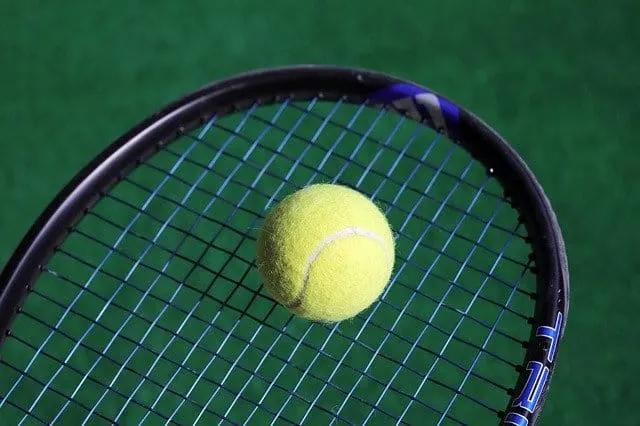
When I started playing tennis a few years ago, I had no idea what tennis racket to buy.
I went to my local sports shop and just grabbed a blue and black one with a ‘W’ in the middle of the string pattern!
It just happened to be a Wilson Ultra 105 racket, and I certainly enjoyed playing with it for the first year, before upgrading to a Mantis Pro 295 III.
Although you need the right technique and mechanics to execute good shots, having the right tennis racket certainly helps.
As I’ve studied the game over the years, I’ve learnt a lot more about different tennis rackets and the differences between them.
So whether you’re a beginner, intermediate player, advanced player, or a junior, there is the right tennis racket for you.
Let’s take a look at the various options.
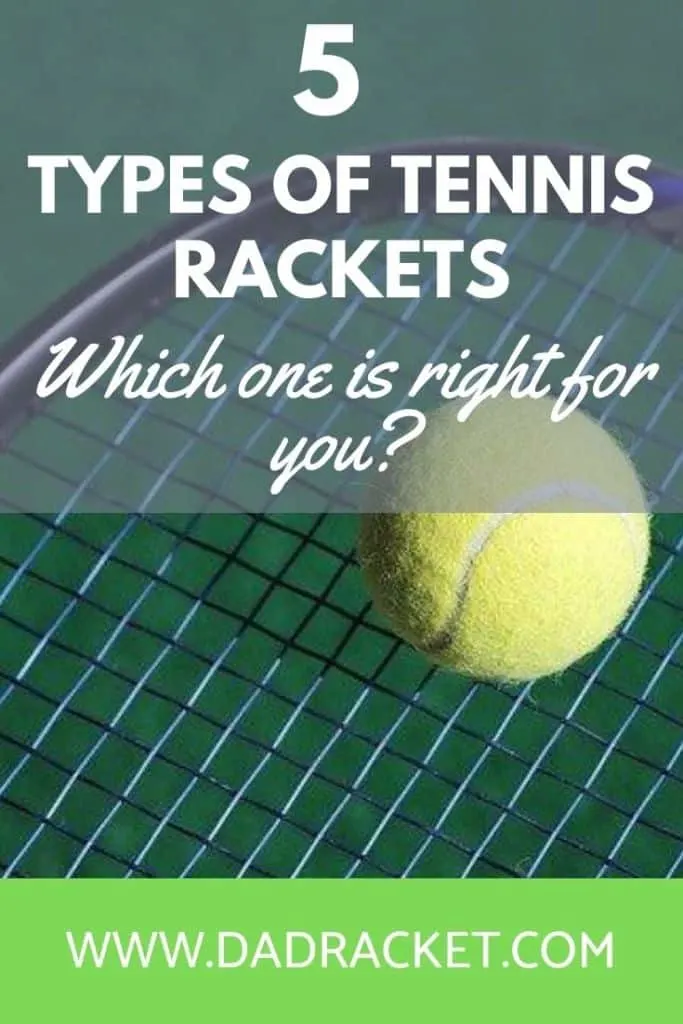
Junior tennis rackets
Kids can start playing tennis as young as 4, but as you might expect, a full-sized adult racket is going to be too big and heavy to use for children until they reach their teenage years.
Rather than looking at the head size and weight of the rackets for junior players, you focus on the length of the racket and use that as a way to find the right one for your son or daughter. The length of the racket is measured from the top of the frame to the base of the handle.
Here’s a quick table showing the various tennis racket lengths for different age ranges and heights.
| Age | Racquet Length | Child Height |
| 3-4 years | 19 inches | 40 inches or shorter |
| 4-5 years | 21 inches | 40-44 inches |
| 6-8 years | 23 inches | 45-49 inches |
| 9-10 years | 25 inches | 50-55 inches |
| 10 years+ | 26 inches | 55 inches+ |
Once your child reaches around 12 or 13 they should be ready for an adult sized racket which is 27 inches long.
How do you measure a child’s tennis racket?
If you want another way to determine what junior tennis racket is right for your child, here’s a quick test you can do in a shop:
- Ensure your child is standing up straight
- Place the racket to the side of your child on the floor with the frame on the bottom (handle pointing upwards).
- If your child can comfortably hold the tip of the handle with their fingers without bending their knees or leaning over, then you have the right sized tennis racket. If not, you’ll have move up or down a size.
However, if you find your child is in between sizes then go with the smaller size. This will be easier for them to control and manoeuvre when they’re playing.
Don’t be tempted to buy the bigger size, even if you think they’ll grow and use it soon. Playing with a racket which is too big will be too cumbersome to use, increase the risk of injury, and your child may pick up some bad habits in their technique to compensate for the larger racket.
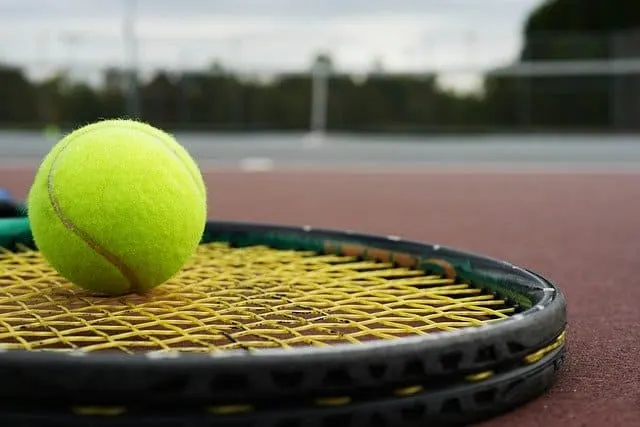
What about choosing a tennis grip size for kids?
Fortunately, this is something you don’t need to worry about.
The grip size is standard across junior tennis rackets at 4 inches. This is measured according to the circumference of the racket’s handle.
However, you still might need to tweak things if the grip feels too small or big for your child.
If it’s too small, that’s easier to correct as you can add an overgrip which will increase the overall grip size slightly.
If the grip is too big, this is a little harder to fix, so you’re better off taking it to a shop or having a conversation with a tennis coach.
Do you need to choose tennis strings for junior players?
Unless your son or daughter is playing high level tournaments, the general advice is not to worry about tennis strings until they’re using a full-size adult racket.
Look for a junior racket that is pre-strung and you should be ok sticking with that until you need a new racket as your child grows.
Recommended junior tennis racket
The Wilson US Open Junior tennis racket is a great choice for juniors. It’s quite cheap and you can get it for 19″, 21″, 23″ and 25″ so this particular model can last from 4 to around 10 years old.


Power rackets
On the face of it this title might seem the right racket type for professional players.
However, it’s for players who need a bit more help to generate power on their shots with less effort.
Power rackets are for players who are either:
- Beginners (who don’t yet have a full swing or right technique to hit powerful shots)
- Smaller players.
- Players who don’t have as much strength as they used to (e.g senior tennis players)
Characteristics
The main characteristics of power rackets are having an oversized head and a lightweight but stiff frame.
Head size
Power rackets have oversized heads as it provides players with a larger sweet spot when they strike the ball, which results in a cleaner and more powerful hit when the ball flies through the air.
Furthermore, a larger head size means you’re less likely to ‘frame’ the ball, which is when you mishit the ball on the edge of the frame. The oversized head gives you more margin for error for actually hitting the ball on the strings.
Finally, an oversized tennis racket simply provides more power as the strings have more spring, which in turn creates more force when you strike the ball.
Oversize heads are considered to be more than 105 square inches.
Weight & frame stiffness
Power rackets tend to have stiffer frames, which means they don’t bend as much when you hit the tennis ball, so it comes off the strings quicker with more power and less effort.
You should be looking for a frame stiffness of more than 68.
They are also lightweight which makes the racket easier to swing and move around.
Normally with a larger head size you’d expect the racket to be heavier overall than a standard head-sized racket, but manufacturers understand this and as such, make the whole frame lighter to counter the additional weight in the head.
An adult racket can be considered lightweight if it’s below 280g (under 10 oz)
Length
The vast majority of all adult rackets are 27 inches in length, but for power rackets you may find some which are a little longer (29 inches is the maximum legal limit). This added length provides a bit more power to your shots, and greater reach on your serve and groundstrokes.
Recommended power tennis racket
The Wilson Hyper Hammer 5.3 is a great choice for beginners. It has an oversized head for more power and an open string pattern for added spin.


For a more detailed list, check out these options.
Control tennis rackets
These rackets are for advanced players, or for intermediate players who have full and fast swings, and hit with a lot of power.
Characteristics
The main characteristics of these rackets are a smaller head size, and more flexible frames with a heavier weight.
Head size
Compared to power rackets, the head size is quite a bit smaller, anywhere between 85-97 square inches.
This means there is less spring on the stings when you make contact with the ball, and consequently, less power.
Furthermore, due to the smaller surface area on the racket face, the sweet spot is smaller so you have to have good timing and control to hit your shots with a solid connection.
Weight & Frame Stiffness
The frames of these rackets tend to be more flexible and less stiff, absorbing more energy from your opponents shot and coming off the strings with less power.
They should have a stiffness rating between 50-70.
Control tennis rackets are also heavier than power rackets. This means you have more stability and feel on your shots, along with a better control of how hard to strike the ball.
Don’t be tempted to purchase a heavier racket if you are not ready for it, or if you’re not physically able. Your arm will tire quickly and you risk picking up an injury.
Control rackets weigh upwards of 325 grams.
Recommended control tennis racket
It has to be Roger Federer’s Wilson Pro Staff RF97 doesn’t it?
It’s heavy but you’ll get a lot of control and stability with the 97 square inch head.


Intermediate tennis rackets (Tweener)
Tweener tennis rackets are inbetween power and control rackets.
They are really suited to intermediate players who like having blend of power and control in their game. As such, they are probably the most popular type of tennis racket to buy as they are a good fit for players who have been on the tennis court for a few years.
Characteristics
As you’d expect the head size, weight and stiffness are in between the specifications for control and power rackets.
Head size
The range in head size for a tweener racket is between 98-104 square inches.
You still get a reasonably sized sweet spot when you strike the ball and a sufficient amount of spring from the strings to give you some power.
Weight & Frame Stiffness
These rackets tend to have a weight between 280-325 grams. This gives you a blend of stability and control on your shots, with a weight light enough to generate power through your swing.
The frame stiffness should be between 60 and 70 which gives you a some power as ball comes back off the strings, but absorbing some energy to give you a bit more control.
Recommended intermediate tennis racket
My Mantis Pro III 295 can be considered a tweener racket. It has a head size of 98 square inches which is close to what you’d expect for a control racket and it weighs 295 grams. I feel it’s ideally suited for intermediate/advanced players.
For me, it’s not a high powered racket, but I have a lot of control on my ground strokes, drop shots and volleys.


Click here for some more choices for intermediate players.
Professional modern player rackets
Several years ago, most professional tennis players used control rackets. The smaller head size and heavier weight meant they could have a lot of control and stability on their shots, while they would generate a lot of the power themselves.
These days the game has evolved and some players now use a different type of racket which is still the standard length and heavier weight, but the head size is a bit bigger along with a stiffer frame (for more power and spin).
You might be tempted to buy one of these rackets as that’s what the pros use, but you should be careful as you can easily pick up an arm injury if you are not in great physical shape.
These professional players are finely tuned athletes who have a whole team around them to ensure they are in peak physical condition!
Consult with your tennis coach first.
The Head Graphene 360+ Gravity Pro is a great modern players racket. It has a head size of 100 square inches and a weight of 315g.


How do I choose the right type of tennis racket?
If you’re a junior player, or a complete beginner it’s a bit easier to select a racket.
For a junior just focus on the right racket length for your height, and you’re basically good to go.
For a beginner, you should be fine with most lightweight rackets with an oversize head. You should be able to fine one quite easily in most sports shops.
But it you’ve been playing a while, you might be ready for the step up to a tweener tennis racket which will give you less power but better feel and control on your shots.
Or if you’re an advanced intermediate player, it might be time to upgrade to a heavier control tennis racket with an even smaller head size.
Be honest with your game, or better still speak to your tennis coach.
They might be able to suggest some tips on what sort of racket to go for.
It also depends on your style.
Are you an aggressive baseliner, or a serve and volley player who likes to come to the net as often as possible. Or are you hybrid of these two styles?
Once you know which basic type of racket to buy, here are some other aspects to think about in order to complement your style of play.
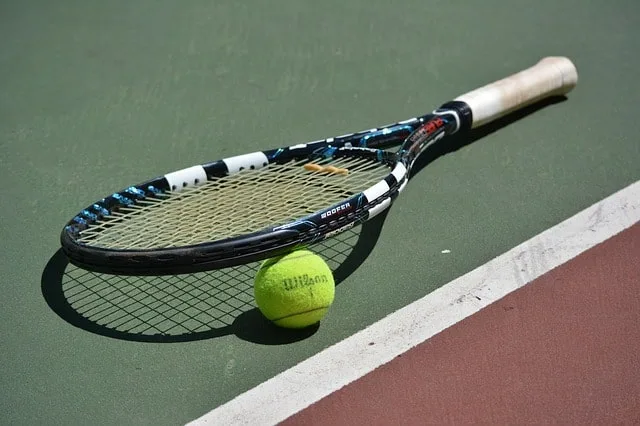
Balance
As well as factoring in the weight of the tennis racket, you need to think how the weight is distributed throughout the racket. There are essentially three options; head light, head heavy and equally balanced.
Head light
With this type of balance more weight is allocated towards the handle of the racket. You usually get head light rackets for heavier rackets, i.e. control and professional player rackets, as it makes it easier to control and swing with. So head light rackets are generally more suitable for more advanced players.
Pros
The racket is more manoeuvrable, which is great for volleys in and around the net.
Cons
Less power and stability on your shots
Head heavy
At the other end of the spectrum are head heavy rackets which have more of the weight towards the racket face. This is more common for power rackets which are more lightweight. Head heavy rackets are generally more suitable for beginners or baseline players who rarely come to the net.
Pros
The extra weight at contact around the racket face produces more power, and offers a bit more stability.
Cons
Less manoeuvrability, which means it’s harder for volleys and shots which demand quick reactions.
Balanced
Finally you can get rackets which have the weight distributed evenly. You get enough stability and power from your ground strokes during a rally and enough manoeuvrability at the net for volleys.
Rackets which are considered mid-weight are often evenly balanced.
Also consider…
If you generally like your racket but you’d like the head to be a bit heavier (for a bit more stability and power) you can add some lead tape to the head to make it a bit heavier. However, it’s best to consult with your coach before doing this.
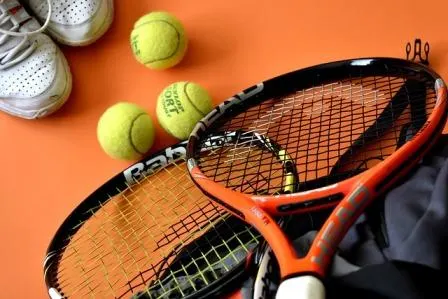
String pattern
You can also think about string pattern when you buy your tennis racket e.g 18 x 20. The first number is the number of vertical strings, and the second is the number of horizontal strings.
18 x 20
This is one of the most common types and it is considered to be a denser string pattern. More strings make contact with the ball and it results in a more stable shot.
Pros
- It generally gives the player more control and stability.
- Great for flatter hitting players.
Cons
- Not so good if you play with a lot of spin
16 x 19
This is most popular option for rackets these days, and the pattern is more open than the 18×20 option.
Pros
- Better feel and power
- You can hit with a good amount of spin.
Cons
- Strings are less durable.
- Loses tension quicker.
16 x 18
As you can see, this is very similar to the 16 x 19 pattern, but it’ll give you even more power and spin. However, you’ll lose tension and durability on your strings even faster.
16 x 20
This is an option to consider if you want something in between 16 x 19 and 18 x 20. You can hit with a reasonable amount of spin, along with a good amount of power on your shots.
Open string patterns
There are also open string patterns which have even less horizontal and vertical strings fitted to the racket head. For example, 18 x 17, 16 x 15, 18 x 16, 16 x 16, 14 x 18. These are far less common, but you’ll be able to generate huge amounts of spin on your shots, as the string movement is a lot greater at impact. However, be prepared to change your strings a lot more often, as it’s very easy to break one!
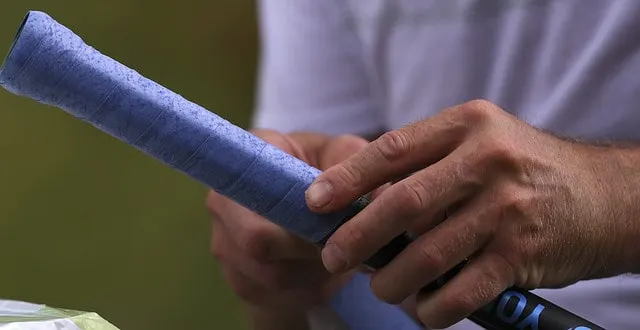
What about tennis grip size for tennis rackets?
When you buy your tennis racket, you can check the grip size on the racket itself (usually on the base of the handle).
It’s measured in inches with numbers ranging from 0-5 or L0 to L5 (5 being the biggest). The grip size options will be the same for all types of tennis rackets except junior ones. The most common sizes are 3 and 4.
If it’s too small, you can increase the grip size slightly with an overgrip, or replace the whole thing with just a larger replacement grip.
If it’s too big, just drop down a grip size.
How do you measure your tennis grip size?
If you’re unsure what grip size is right for you here are two little tests you can do to find out.
Use a ruler
- Open your hand with the palm facing upwards and fingers extended but close together.
- Line up the ruler from the bottom crease of your palm up to the tip of your ring finger.
- This distance in inches will tell you your grip size.
Use your index finger
- Hold your racket with your hitting hand using an eastern forehand grip.
- You should be able to fit your index finger of your other hand inbetween your ring finger and palm.
Anything else to consider?
Choosing the right racket for your game is a big step in helping you to win more points and improve as a tennis player.
However, you also need to thing about which tennis strings are right for you. Some are designed to increase the amount of spin you can generate, and some help you achieve more power.
You need to thing about what thickness (or gauge) of tennis string to use, as well as what type of string to buy.
